With the advancement of technology, the know-how behind the land reclamation procedure also has alterations. Now, many projects use synthetic turf or artificial grass in the process of reclamation.

Land reclamation or also known as land fill, far different from a landfill which is a waste disposal ground, which is the process of improving lands or making new land from the ocean, lakes, and riverbanks to make them suitable for a more intensive use may be concerned with the improvement of rainfall-deficient areas by irrigation, the removal of detrimental constituents from salty or alkali lands, the diking and draining of tidal marshes, the smoothing and vegetation of strip-mine spoil areas, and similar activities but also might result to negative impact to once beautiful natural habitat.
In the Philippine context, however, reclamation is an often discussed issue, especially when it comes to a land reclamation of our bays in the metro areas considering to its pros and cons. For an archipelago with the third longest coastline in the world, with a lot of vacant and underutilized land, and the wrong land uses at the wrong place, at the wrong time, do we really need to reclaim coastal areas?
Many irrigation projects have failed because of salt accumulations in the irrigated soils or the silting in of reservoirs and irrigation canals. It is essential, therefore, that provision for drainage of the irrigated lands is considered in the planning of all irrigation reclamation projects and that water relatively free from dissolved salts is used.
There are several methods of land reclamation, depending upon the type of fill material, foundation soil, the topography of the seabed, the availability of equipment, and allowable fine material for reclamation.
Methods of Reclamation of Coastal Areas
DRY METHOD
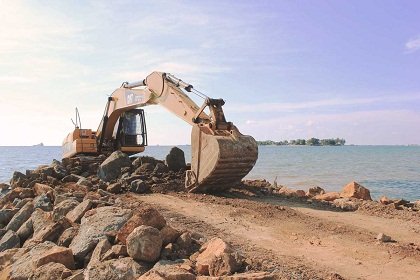
The dry method which usually uses a truck or conveyor belt to transport fill material to extend the land towards the sea is suitable for filling material from land sources, especially rock, hillcut and clay fill. Filling or transporting clay fill material into the sea would create a viscous slurry which would take much longer to become usable land.
HYDRAULIC RECLAMATION METHOD
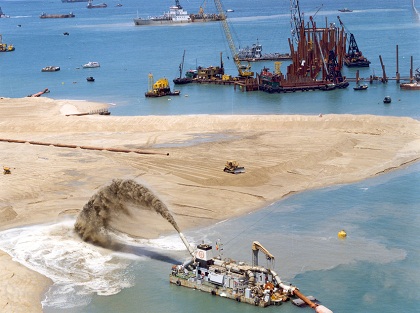
This method is implemented when fill material is obtained from an offshore borrow source and is only suitable for granular fill, which has good drainage characteristics.
DIRECT DUMPING
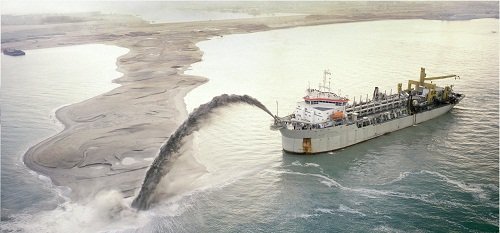
A direct dumping method is used when the seabed is deep or the underlying seabed soil is soft and is applicable not only for granular material but also for stiff clay and soft clay. A bottom-opening barge usually carries fill material from the borrow source and either sail with a self-propelled or pushed by the powerful tugboat to the designated location where generally controlled by a global positioning system. Sufficient draft and clearance are required for this method. However, bottom dumping alone cannot complete the reclamation because it can only operate up to 2 – 3 meters depth below sea level. The succeeding plane of fill has to be elevated by hydraulic filling or other means.
REHANDLING FROM A REHANDLING PIT
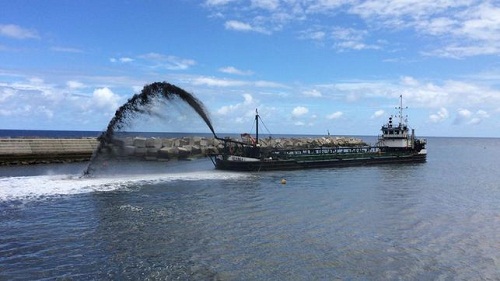
The rehandling method involves transporting sand by barges and dumping the fill material temporarily in the pit for storage with a storage capacity of a few million cubic meters. Rehandling pit locations are mostly designated at natural hollows on a well-founded seabed or formed by dredging. To create a rehandling pit, one needs to consider the stability of the pit slope. The construction rate of such method is reliant on the stationary cutter suction dredgers and the number of barges utilized for transportation.
HYDRAULIC FILLING
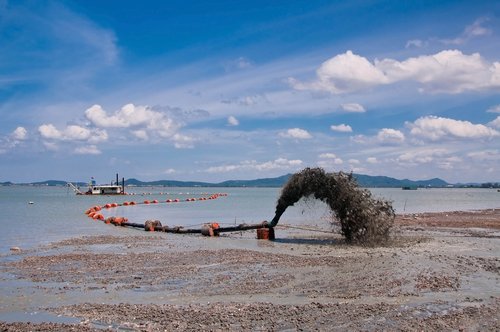
This method is largely used when filling is carried out from an offshore foundation, either from a rehandling pit or from a trailer suction hopper dredger, appropriate for granular fill and is not desirable when the seabed is too shallow or its soil is too soft. The percentage of fill material to water is accustomed corresponding to the grain size of the fill material. A large ratio of material to water would lead to wearing of the inner walls of the sand transportation pipe. Conversely, a lesser ratio of material to water will lessen the production rate. After a certain amount of land has formed, the pipes are extended accordingly. Pipes that have to run above water can be floated with floaters attached to the pipes.
Away from the dredger location, rainbow pumping which normally suitable for underwater filling is implemented.
SAND SPREADING
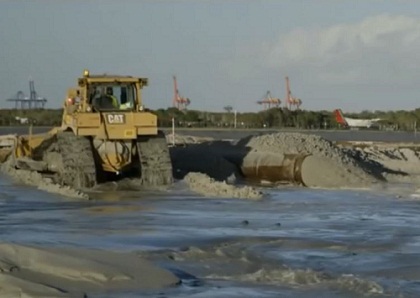
Sand spreading is implemented when a shallow seabed is encountered or when the seabed soil is too soft. Sand deposits using sand spreading method usually results in a loose profile.
PUMPING INSIDE THE BUNDS
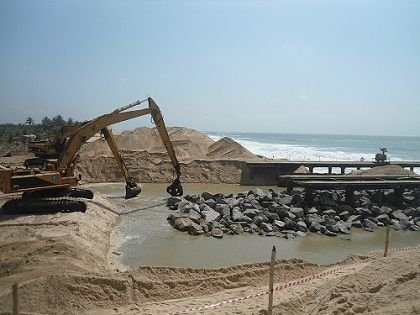
This type of method minimizes the losses caused by wave and current action which carried out the project within a protected area after a bund has been formed around the proposed reclamation area, however, it requires an outlet for the overflow of water and fine material, or else, mud can be trapped at or near the corner of the bund.
This land reclamation procedure is well-known as “infilling”, and the resources used for this purpose is recognized as “infill”. However, this method carried out the danger of using for residential purposes due to its high vulnerability to soil liquefaction during an earthquake.
Pros
• Creating new urban land creates more access roads that connect to or from existing main roads.
• Reclaimed lands can also act as natural barriers as wave breakers against tsunamis and storm surges.
Cons
• Can contribute to further traffic congestion and slow down drainage and flood control.
• The loss of the world’s fourth largest body of inland water led to more-extreme temperature swings in the region, and wind storms carried contaminated dust from the exposed seabed across the region.
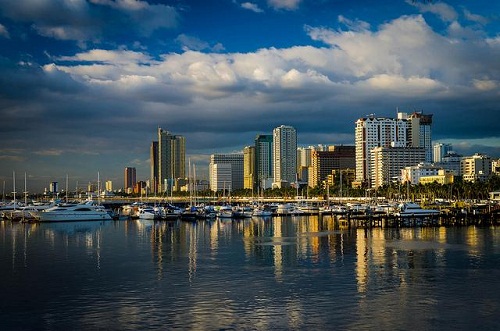
The legacy that full reclamation leaves behind in terms of lost opportunities and the heavy burden that the future generation will have to carry should be carefully studied. One cannot resort to reclamation just because it is the most convenient solution toward a lack of urban space and new urban land for real estate development when there are still potential areas that can be developed elsewhere in the metropolis. Reclamation should only be considered as the last resort.